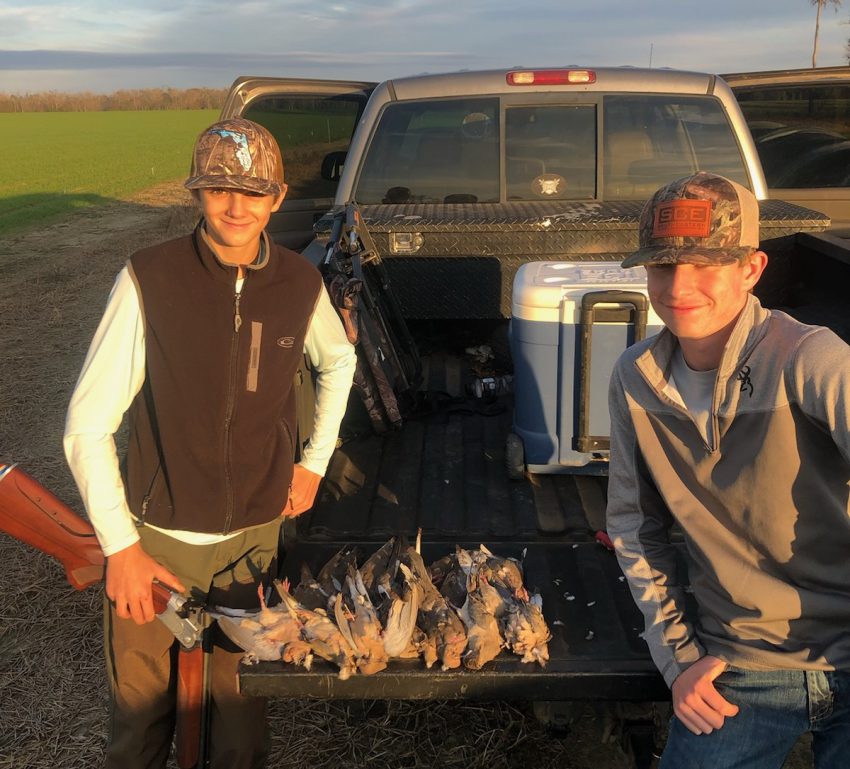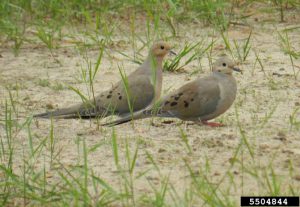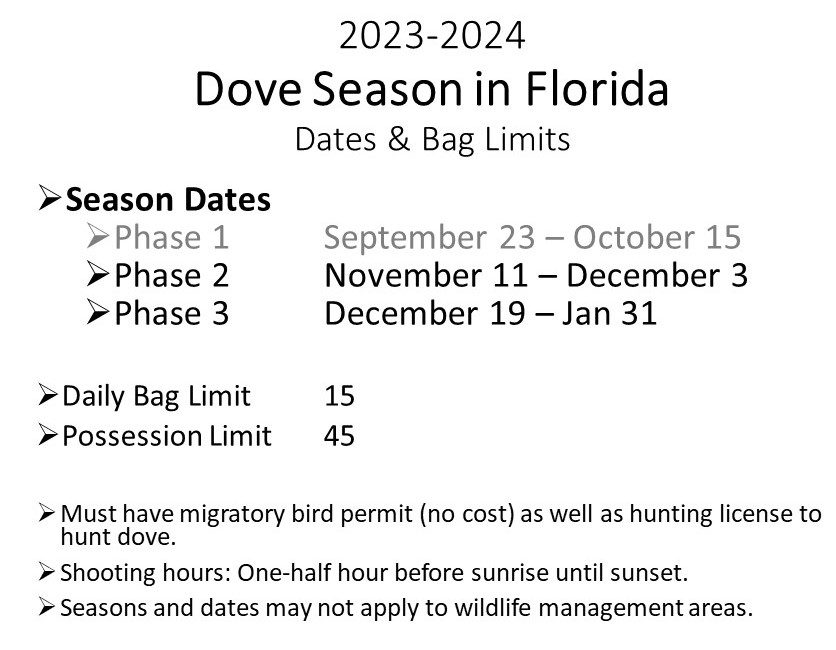
Photo Credit: Andrew Fleener
In the past my colleagues and I have written several articles about the establishment and management of dove fields (linked below). These articles tend to focus on what and when to plant to successfully attract doves. The focus has been on the field, not on the hunting. Conversely, this document will focus on the hunting. The following guidelines and explanations are intended to help provide clarity and prevent misunderstandings regarding what is and is not permissible where agricultural practices and dove hunting intersect in Florida.

Photo Credit: Brett Marshall, Sault College, Bugwood.org
First, as it relates to dove, it is permissible to plant any crop you like, by any means you like, with the intention of hunting in the vicinity of the crop. The issue is not with planting – it is with hunting. UF/IFAS provides specific recommendations (planting dates & techniques, seeding rates, varieties, etc.) for a wide variety of crops. While growers are encouraged to follow these recommendations to maximize their chances of having as successful crop, following these recommendations (or not) does not dictate the legality of hunting.
It is commonly understood that baiting doves (and other migratory birds) with the intent to harvest is not permissible. However, when agricultural practices are involved what constitutes baiting may not always be as readily understood. Let’s start the explanation with excerpts from Title 50, Chapter 1, Subchapter B, Part 20 and 21 of the Code of Federal Regulations (the federal law that pertains to the hunting of migratory birds).
(j) Baited area means any area on which salt, grain, or other feed has been placed, exposed, deposited, distributed, or scattered, if that salt, grain, or other feed could serve as a lure or attraction for migratory game birds to, on, or over areas where hunters are attempting to take them. Any such area will remain a baited area for ten days following the complete removal of all such salt, grain, or other feed.
(k) Baiting means the direct or indirect placing, exposing, depositing, distributing, or scattering of salt, grain, or other feed that could serve as a lure or attraction for migratory game birds to, on, or over any areas where hunters are attempting to take them.
20.21 What hunting methods are illegal? … (i) By the aid of baiting, or on or over any baited area, where a person knows or reasonably should know that the area is or has been baited. However nothing in this paragraph prohibits: … (2) The taking of any migratory game bird, except waterfowl, coots and cranes, on or over lands or areas that are not otherwise baited areas, and where grain or other feed has been distributed or scattered solely as the result of manipulation of an agricultural crop or other feed on the land where grown, or solely as the result of a normal agricultural operation.
Note: Bolding in the above text was inserted by the author for illustrative purposes.
All of this boils down to a few simple concepts. In Florida…
1) The only seed (grain) you can legally hunt over is that coming from the crop grown in the field where the grain is found. The grain must have grown in the field and have never left the field. If you place, expose, deposit, distribute, or scatter any new/additional grain including grain that may have been harvested from that field and then returned after cleaning, storing, processing, etc. you are baiting.
2) Any seed or grain placed, exposed, deposited, distributed, or scattered in the field must be completely removed for 10 days prior to hunting the field. In this context, completely removed can mean physical removal (ie. buried/planted under the ground) or germination (after a seed germinates it becomes a plant – plants are legal).
For a field to be legal to hunt, no seed, other than that grown in the field, can be visible on the soil surface for at least 10 days prior to hunting. Put very plainly, if there is any seed visible at the time of hunting there should be plants (or plant residue) present that match the seed. If you want to hunt dove over grain/seed of any kind you must have grown the grain crop to maturity and produced the grain on-site. You cannot hunt over any grain/seed that has been transported to the field. Again, you may plant any crop you like by whatever means you like but if your planting practices result in seed being visible on top of the ground you may not legally hunt over the field until all seed has been gone/covered for 10 days.

Further Reading:
Get Started Dove Hunting
Dove Hunting Resources
Dove Hunting Regulations
Planning Ahead for Dove Season
Timing is Crucial for Successful Dove Fields
Don’t Forget About Wildlife Habitat Projects This Spring
- Hunting Doves Over Crops: What’s Legal? What’s Not? – Clarification on Baiting - November 27, 2023
- Now is the Perfect Time to Treat Cogongrass – Make it Count - October 13, 2023
- Wildlife Food Plots: A Quick Guide to Success - August 11, 2023
